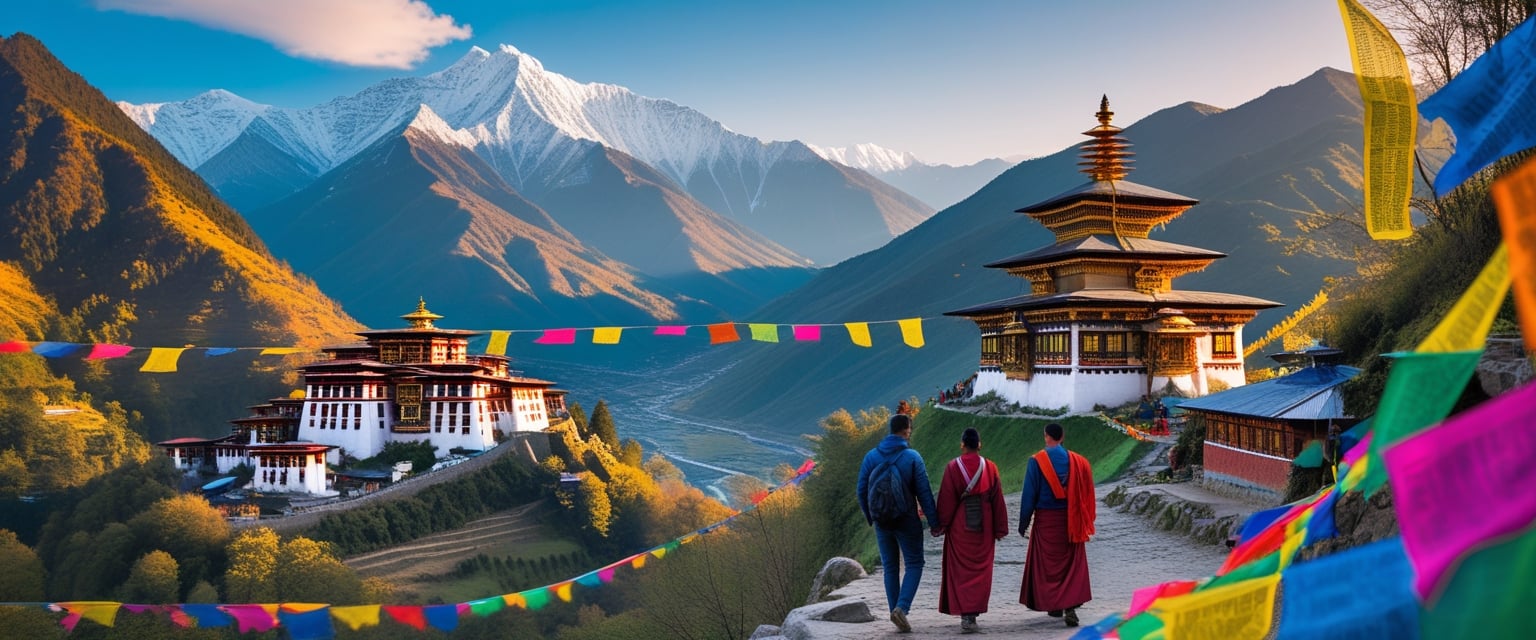Planning your next unforgettable vacation? Discover why Bhutan is the best place to visit 2026, where untouched beauty meets timeless spirituality. This Himalayan kingdom offers travelers an escape into a world of peace, culture, and adventure unlike any other.
From the breathtaking Tiger’s Nest Monastery to serene valleys and vibrant festivals, Bhutan creates memories that last a lifetime. Whether you’re seeking mindfulness, nature, or cultural immersion, you’ll quickly understand why Bhutan is the best place to visit 2026 for a truly life-changing 7-day experience.
Bhutan stands out as one of the best places to visit in 2026 because of its unique blend of natural beauty, rich culture, and peaceful atmosphere. Spending seven days in Bhutan offers travelers a chance to explore breathtaking landscapes, ancient monasteries, and vibrant festivals, making the trip truly life-changing. October is especially ideal for visiting, as the weather is clear and cool, perfect for sightseeing and attending traditional events.
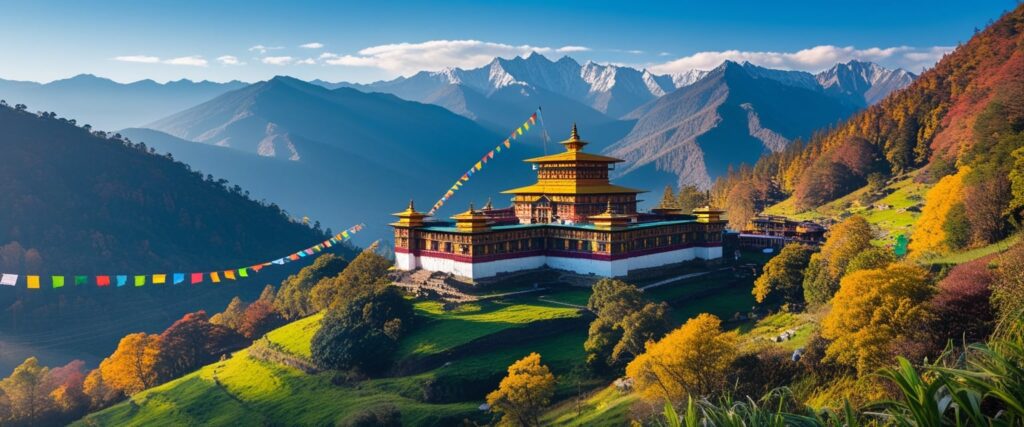
This small Himalayan kingdom offers a magical experience for families, couples on honeymoon, and solo travelers alike. Its top tourist attractions, such as Tiger’s Nest Monastery and Punakha Dzong, provide unmatched cultural insights and stunning views. Visiting Bhutan from nearby India is also straightforward, making it accessible for many to enjoy its serene environment and warm hospitality.
Travelers who visit Bhutan in late months like October or December will find the atmosphere peaceful and rejuvenating. The country’s natural beauty and thoughtful approach to tourism ensure that every visitor leaves with memorable impressions from one of Asia’s most beautiful destinations.
Why Bhutan Is the Best Place to Visit in 2026
Bhutan offers a unique blend of natural beauty, deep spirituality, and cultural richness. Visitors can experience meaningful journeys in a short time, explore stunning landscapes, and enjoy a peaceful atmosphere. Its family-friendly environment and romantic settings make it an excellent destination for both group travel and intimate getaways.
Life-Changing Experiences in 7 Days
Spending a week in Bhutan allows visitors to connect deeply with its culture and nature. Many travelers find a strong sense of peace through visits to sacred sites like Tiger’s Nest Monastery, which is closely linked to Guru Rinpoche, the revered founder of Bhutanese Buddhism. Hiking through the Himalayan kingdom’s valleys and forests offers a break from daily life.
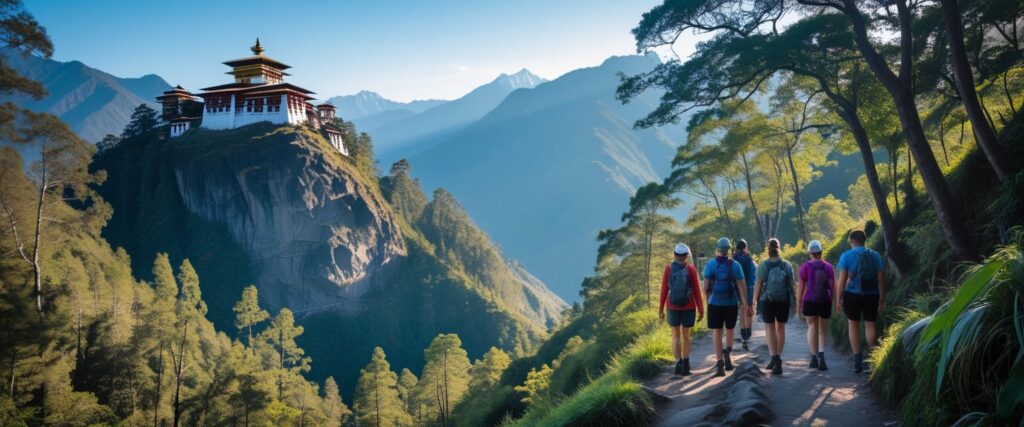
The country’s focus on Gross National Happiness shapes every visit, encouraging mindfulness and respect for the environment. In just seven days, people often report feeling more grounded and refreshed. Bhutan’s limited tourist quota also ensures quiet, personal experiences without crowds.
Bhutan: The Most Beautiful Country in Asia
Bhutan’s landscapes are notable for vibrant green valleys, snow-capped peaks like Jomolhari, and pristine forests covering over 70% of its land. Visitors can see countless natural features—from glacial lakes to misty mountain passes like Dochula Pass, decorated with prayer flags.
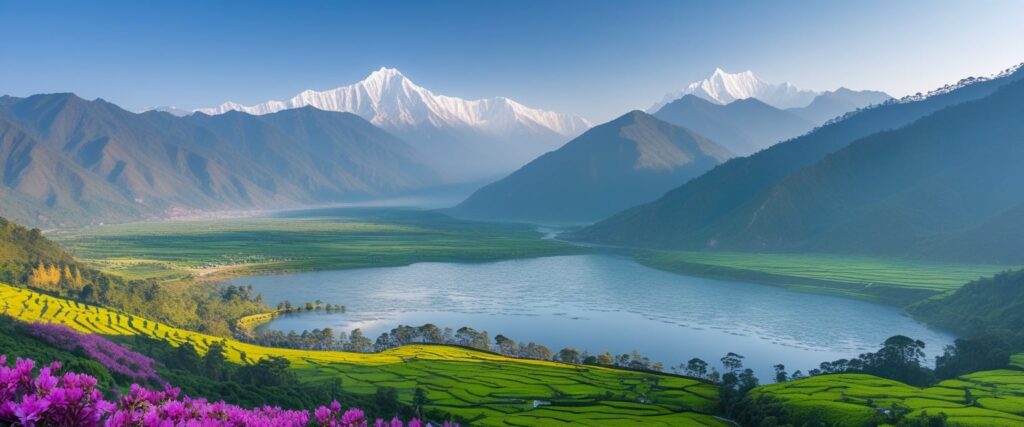
The country’s strict conservation policies maintain this beauty. Protected parks and eco-tourism initiatives help keep habitats intact for rare animals like the red panda and snow leopard. Bhutan’s scenery shifts with each season, offering rhododendrons in spring and golden rice fields in autumn, creating year-round visual appeal.
Magical Family Trips to Bhutan
Families appreciate Bhutan for its safe environment and immersive cultural experiences. Children and adults alike can attend colorful festivals such as Paro Tshechu, where masked dances and music connect them to ancient traditions.
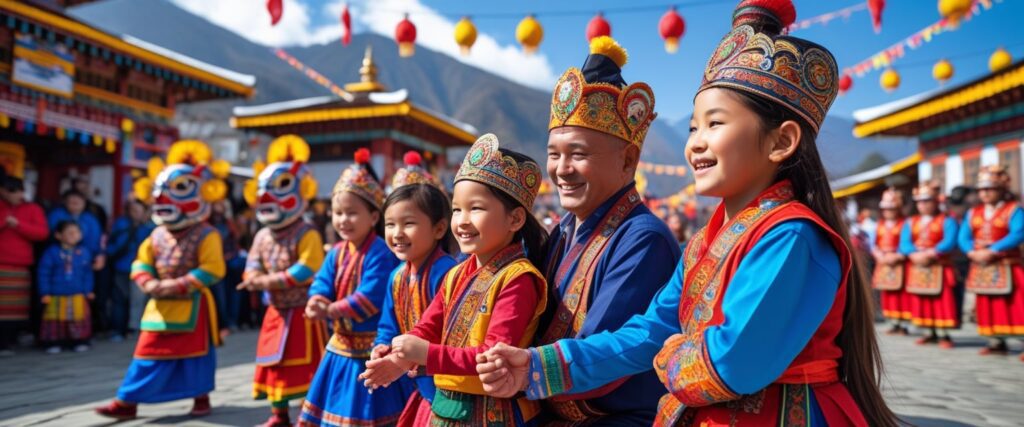
Staying in a traditional farmhouse lets families share local life, try Bhutanese cooking, or learn archery. The easy travel pace and welcoming communities promote memorable bonding. Bhutan’s emphasis on culture and nature teaches respect and curiosity, making it an enriching trip for all ages.
Bhutan as the Ideal Honeymoon Destination
Couples choose Bhutan for its romantic settings and spiritual calm. Quiet valleys, remote monasteries, and serene glacial lakes provide beautiful backdrops for honeymoon memories.
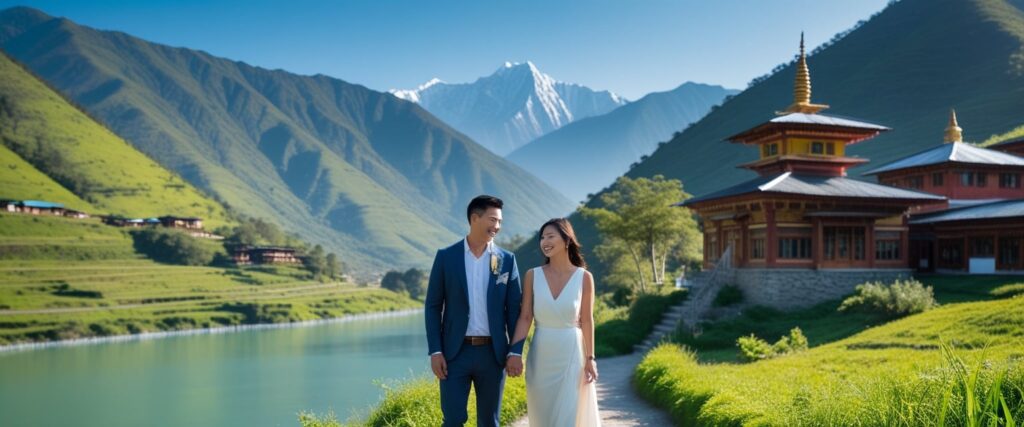
Bhutan’s peaceful environment supports relaxation and reflection, away from crowded resorts. The country’s hospitality includes boutique eco-lodges that blend comfort with local design. Couples can explore Bhutan’s unique traditions, such as visiting dzongs and joining festivals, creating a meaningful start to their life together.
Perfect Times to Visit Bhutan: October and December
These months offer clear skies and distinct experiences. October brings warm weather, vibrant festivals, and busy trekking seasons. December offers quieter, peaceful surroundings with fewer tourists and mild winter air.
October: The Best Month for Bhutan Travel
October is the most popular month to visit Bhutan. The weather is dry with clear, sunny skies. Temperatures are comfortable for outdoor activities and trekking.
During October, the famous Thimphu Tshechu festival takes place. This colorful event showcases traditional masked dances, drawing many locals and tourists. The Paro Tshechu festival also occurs around this time.
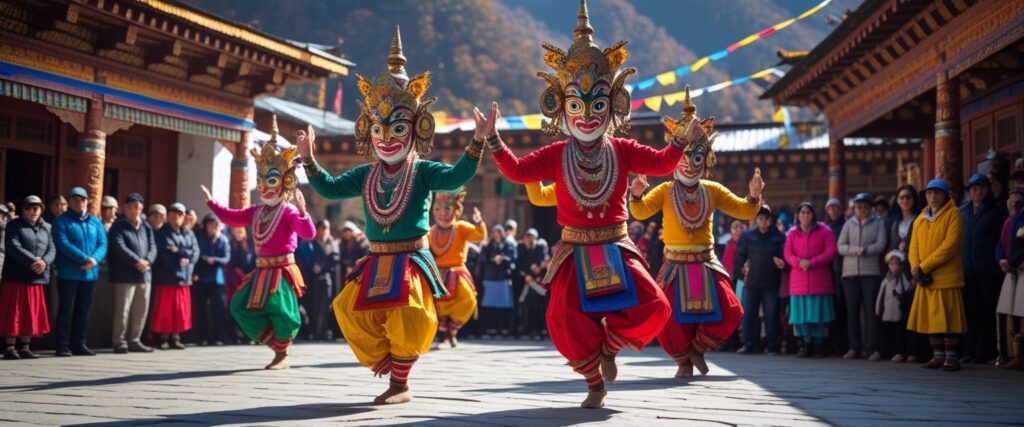
October is ideal for trekking in areas like the Phobjikha Valley, where the clear weather allows unforgettable views of the Himalayas. Travelers experience lively cultural events alongside beautiful landscapes during this vibrant month.
December: Experience Bhutan’s Peaceful Side
December brings a calm atmosphere with fewer visitors. The valleys, including Thimphu and Paro, have mild temperatures but colder nights, especially at higher altitudes.
This quieter period allows travelers to enjoy Bhutan’s natural beauty in peace. The landscape is often crisp with a clear view of snow-capped peaks.
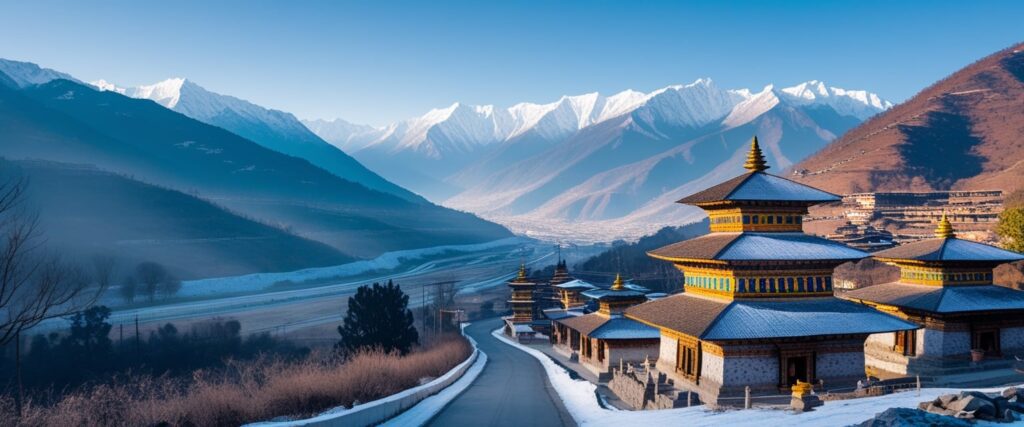
Though it is winter, main roads remain open, and many attractions are accessible. Visitors enjoy serene moments in temples and monasteries without large crowds.
Seasonal Festivals and Unique Events
Bhutan’s festivals follow the lunar calendar, often falling in autumn or early winter. Besides big celebrations like Thimphu Tshechu and Paro Tshechu, smaller regional festivals offer authentic local experiences.
In October, the Royal Highland Festival in areas like Laya presents horse races and traditional sports. Events like these allow visitors to engage closely with Bhutan’s culture.
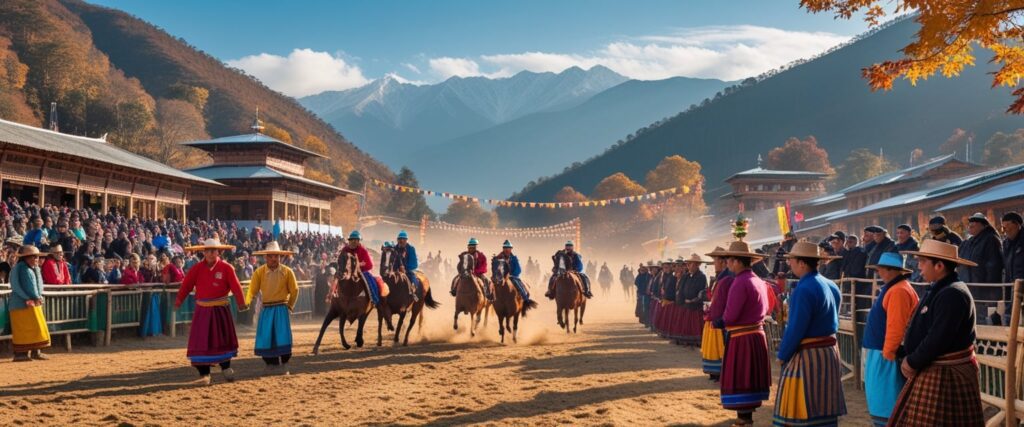
December is less festival-focused but offers quiet religious observances. Visitors might find this time good for reflection and learning about Bhutan’s spiritual side.
Why Bhutan Is an All-Year Destination
Despite the popularity of October and the peace of December, Bhutan has attractions year-round. Spring brings rhododendron blooms and warm weather. Summer is rainy but good for spotting alpine flowers.
Winter months, including December, offer clear skies and off-peak travel benefits. Seasonal festivals keep cultural richness alive through the year.
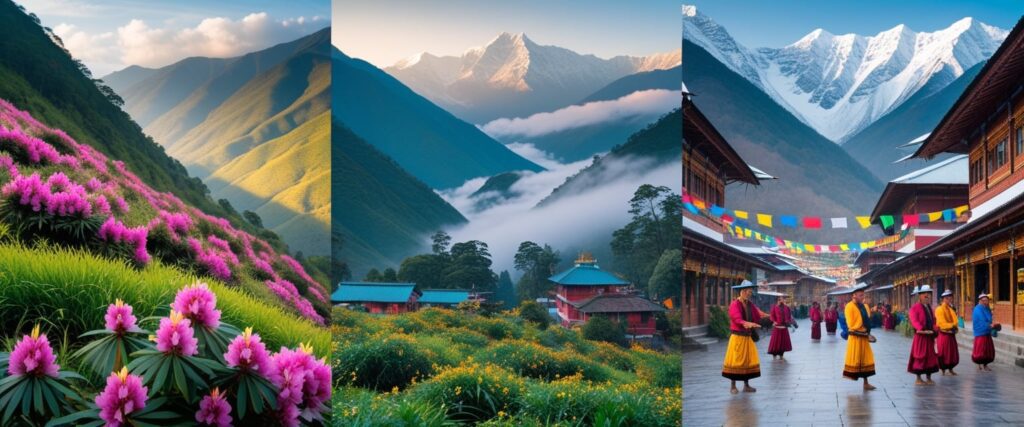
Each season suits different interests, from trekking to festival visits, making Bhutan flexible for many travelers. Planning depends on preferences for weather, crowds, and activities.
For more on Bhutan’s timing and travel tips, see best times to visit Bhutan guide.
Top 10 Places and Unforgettable Attractions in Bhutan
Bhutan offers a mix of spiritual sites, historic fortresses, vibrant cities, and scenic landscapes. Visitors can hike cliffside monasteries, explore ancient dzongs, and enjoy peaceful valleys. Each destination has unique features that showcase Bhutan’s culture and natural beauty.
Tiger’s Nest Monastery: A Must-Visit Wonder
Tiger’s Nest Monastery, also called Paro Taktsang, is perched on a sheer cliff more than 900 meters above Paro Valley. It is one of Bhutan’s most famous spiritual sites and a challenging hike for visitors. The monastery is built around a cave where Guru Rinpoche is said to have meditated.
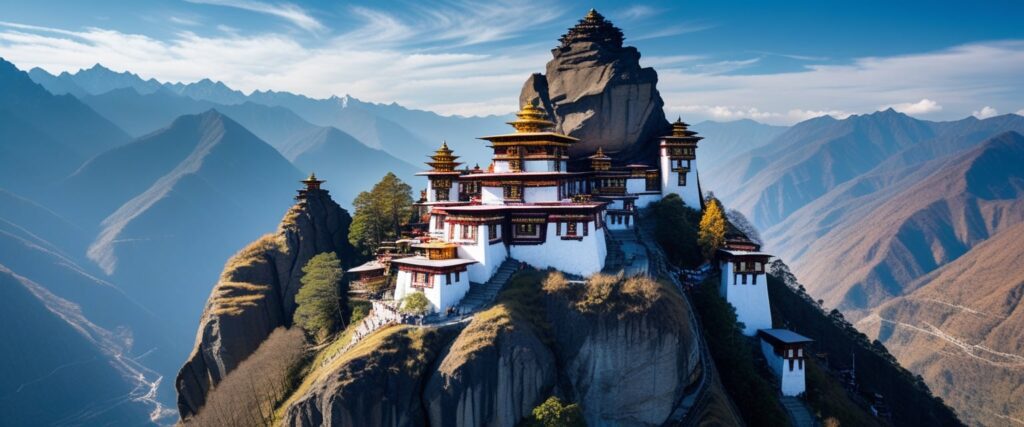
The architecture blends naturally with the rock face, with temples connected by narrow stairs. Visitors experience stunning views of the valley below throughout the hike. The site is sacred, so modest dress and respectful behavior are required. The best times to visit are during spring and autumn for clear skies and mild weather.
Iconic Dzongs: Tashichho Dzong, Punakha Dzong, and More
Dzongs are massive fortress-monasteries central to Bhutanese culture. Tashichho Dzong in Thimphu houses the government offices and monastic body. It features beautiful gardens and traditional Bhutanese architecture.
Punakha Dzong, located where the Pho and Mo rivers meet, is known for its rich history and stunning riverside setting. It once served as the capital and hosted the coronation of Bhutan’s first king. Punakha Dzong is especially famous for its intricate woodwork and large courtyards.
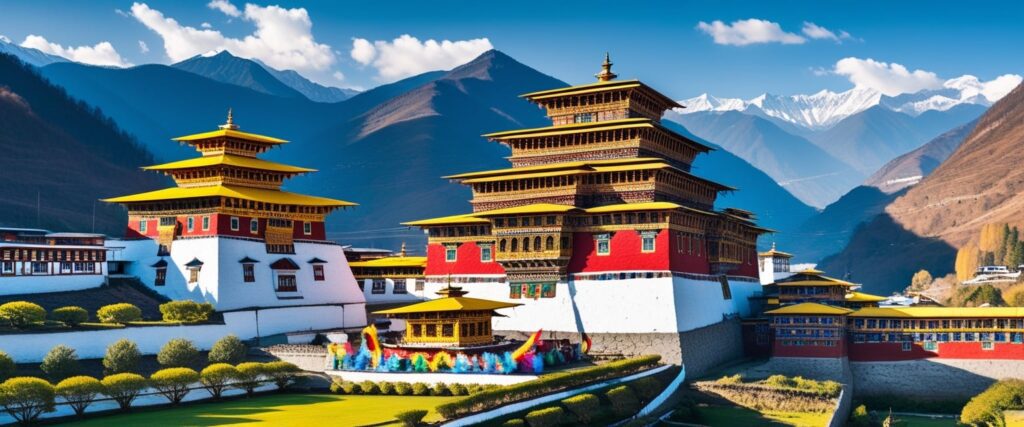
Other notable dzongs include Rinpung Dzong in Paro, well-known for its impressive walls and festivals, and Jakar Dzong in Bumthang, which sits atop a hill overseeing the valley.
Exploring Paro, Thimphu, and Punakha
Paro is a small town famous for its Airport and landmarks like Tiger’s Nest and Rinpung Dzong. Visitors also explore traditional markets and Chimi Lhakhang, a fertility temple known as the “Temple of the Divine Madman.”
Thimphu, Bhutan’s capital, combines tradition and progress. It offers sites like the Buddha Dordenma Statue, Folk Heritage Museum, and the bustling weekend market. The city hosts important festivals, including Thimphu Tshechu.
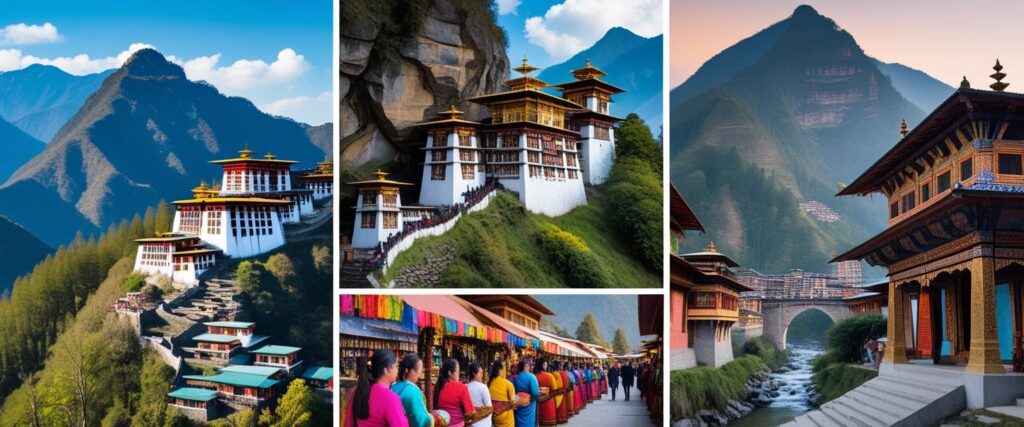
Punakha, once the capital, is quieter but rich in cultural sites. Along with Punakha Dzong, it offers scenic river views and the nearby Punakha Suspension Bridge. The area is ideal for a more relaxed cultural experience.
Scenic Treks and Valleys: Paro Valley, Phobjikha Valley, Bumthang
Bhutan’s landscapes are filled with beautiful valleys and trekking routes. The Paro Valley surrounds Paro town and includes many monasteries and trails. The Druk Path trek links Paro and Thimphu with scenic mountain views and stops at ancient temples.
Phobjikha Valley is known for its wide, glacial valley and the Gangtey Monastery. It is also a winter home for rare black-necked cranes, making it popular for nature lovers.
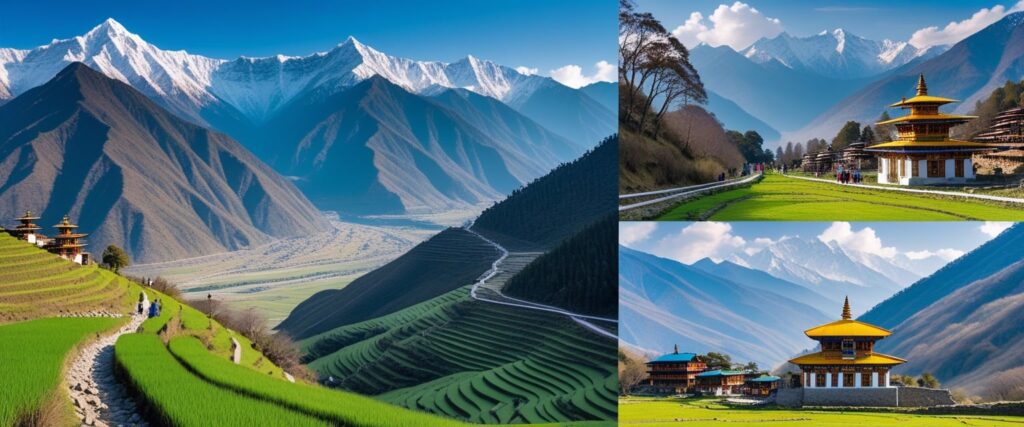
Bumthang is Bhutan’s cultural heartland with four valleys full of historic temples and festivals. The valley includes Jakar Dzong and religious sites like Kurje and Tamshing Lhakhangs. Its peaceful environment draws travelers interested in Bhutan’s spiritual traditions.
For detailed guides on these must-see Bhutan attractions, see the full list of top places to visit in Bhutan.
How to Plan Your Bhutan Adventure Easily
Planning a trip to Bhutan requires attention to entry rules, travel options, and cost details. Clear steps help make the booking smooth whether the traveler is coming from India or abroad. Using guided tours often simplifies the process while ensuring travelers experience key Bhutan sights like Zorig Chusum art, Wangdue town, or Thongdrel festivals.
Simple Trip Planning from India and Abroad
Travelers from India enjoy simpler entry rules compared to most other countries. Indian nationals do not need a visa but must carry valid ID like a passport or voter card. Flights to Bhutan usually arrive at Paro Airport, the only international airport, with connections from cities such as Delhi and Kolkata.

For visitors from other countries, booking through a licensed Bhutanese tour operator is recommended. This operator handles visa applications, accommodation, and internal transport. Planning trips during clear weather months like October offers ideal conditions to explore Bhutan’s mountains and various attractions easily. Booking early ensures better availability of flights and hotels.
Visa, Entry, and Sustainable Tourism in Bhutan
All tourists except nationals from India, Bangladesh, and the Maldives require a visa to enter Bhutan. Visa applications must include a passport copy, photo, and a USD 40 visa fee. Visitors receive a visa clearance letter before arrival, which they must present at the border.
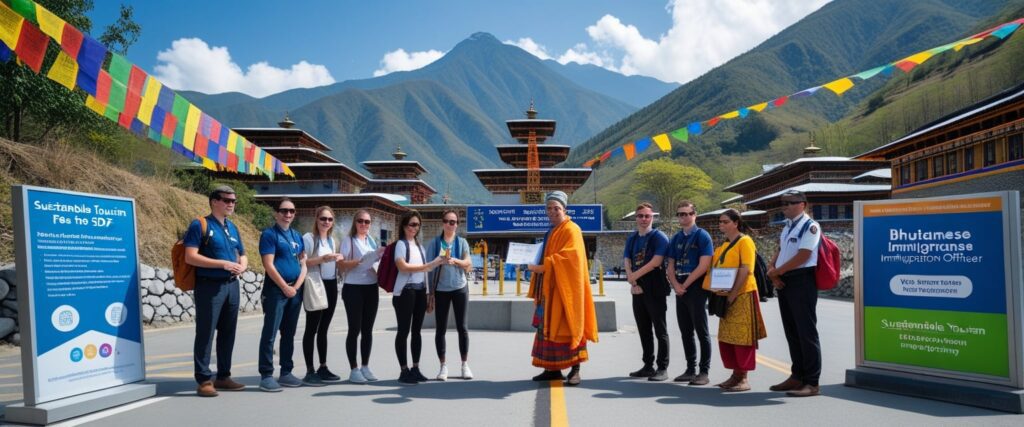
Bhutan applies a Sustainable Development Fee (SDF) of USD 100 per day for most tourists. This fee supports environmental preservation and local culture. Visitors are encouraged to respect Bhutan’s traditions by learning about local customs and participating in events like the vibrant Thongdrel festival or exploring historic sites such as dzongs.
All-Inclusive Travel Packages and Costs
Most travelers find all-inclusive tour packages the easiest way to visit Bhutan. These packages usually cover flights, hotels, guided tours, meals, and transportation. Prices vary based on season and services but typically start around USD 250 to 300 per day, including the SDF.
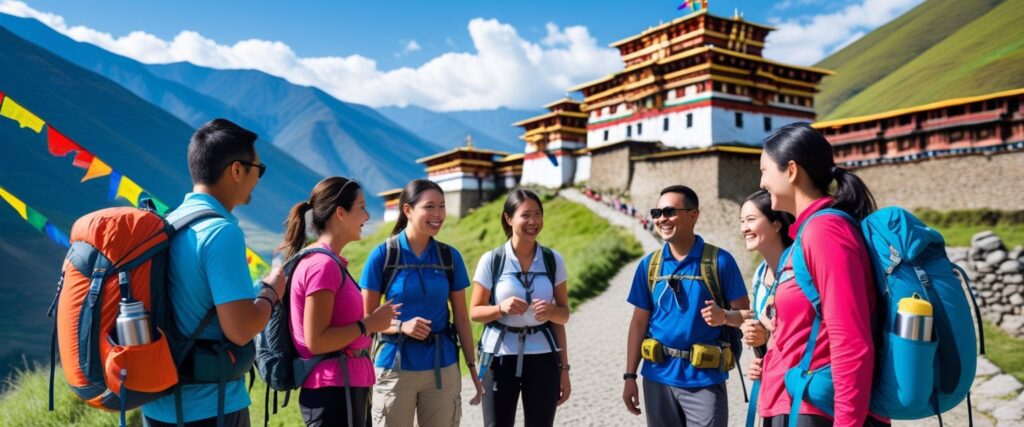
Packages often include visits to top Bhutan tourist attractions, including the Wangdue Phodrang dzong, Punakha valley, and the Zorig Chusum painting schools. Experienced guides enrich visits by explaining Bhutan’s culture and history while helping travelers navigate hiking trails and scenic spots. Booking with well-reviewed agencies guarantees a hassle-free experience. For more details, see how to plan your Bhutan trip.
Conclusion
Bhutan is more than just a travel destination it’s a journey into happiness, harmony, and heritage. Every valley, monastery, and festival reflects the nation’s deep respect for nature and culture. With its pristine landscapes, warm hospitality, and sustainable tourism approach, it’s clear why Bhutan is the best place to visit 2026 for travelers seeking both serenity and discovery.
Whether you’re planning a romantic getaway, a family trip, or a solo adventure, the Land of the Thunder Dragon proves again and again why Bhutan is the best place to visit 2026, offering experiences that stay in your heart forever.
Frequently Asked Questions
This section answers questions about the best time to visit Bhutan, the benefits of a 7-day trip, top places to see, family travel, Bhutan’s unique beauty, and what it’s like to visit in December. It covers key details that help travelers plan and enjoy their visit.
What makes October an ideal time to visit Bhutan?
October offers cool, pleasant weather with clear skies and low rainfall. The autumn colors bring rich reds and golds to the landscape, making it perfect for sightseeing and trekking. Major festivals like Thimphu Tshechu add cultural depth to the visit.
How can a 7-day itinerary in Bhutan enrich a traveler’s life?
A 7-day trip allows time to experience Bhutan’s mix of nature, culture, and spirituality. Visitors can trek through stunning mountains, attend traditional festivals, and explore ancient monasteries. This balance of adventure and calm offers a deep connection to Bhutan’s heritage.
What are the top 10 must-visit places in Bhutan?
Key sites include Paro Valley, Punakha Dzong, Tiger’s Nest Monastery, Thimphu city, Phobjikha Valley, Bumthang Valley, Wangdue Phodrang, Dochula Pass, Haa Valley, and Jakar. Each location offers unique natural beauty or cultural significance worth exploring.
Why should families consider Bhutan for a magical holiday experience?
Bhutan provides safe, peaceful environments ideal for family travel. Kids and adults can enjoy nature walks, cultural shows, and easy treks. The festivals and friendly local culture make it a memorable and educational trip for all ages.
What makes Bhutan stand out as the most beautiful country in Asia?
Bhutan’s untouched landscapes, vibrant autumn colors, and well-preserved traditions create a unique and stunning environment. It combines mountain scenery with ancient architecture and spiritual sites, offering travelers a simple but striking natural and cultural beauty.
Can you describe the experience of visiting Bhutan in December?
December is colder with crisp, clear air and fewer tourists. The quiet and serene atmosphere suits those seeking peace. Snow may dust mountain peaks, enhancing the scenic beauty, while local festivals still provide cultural interest.
